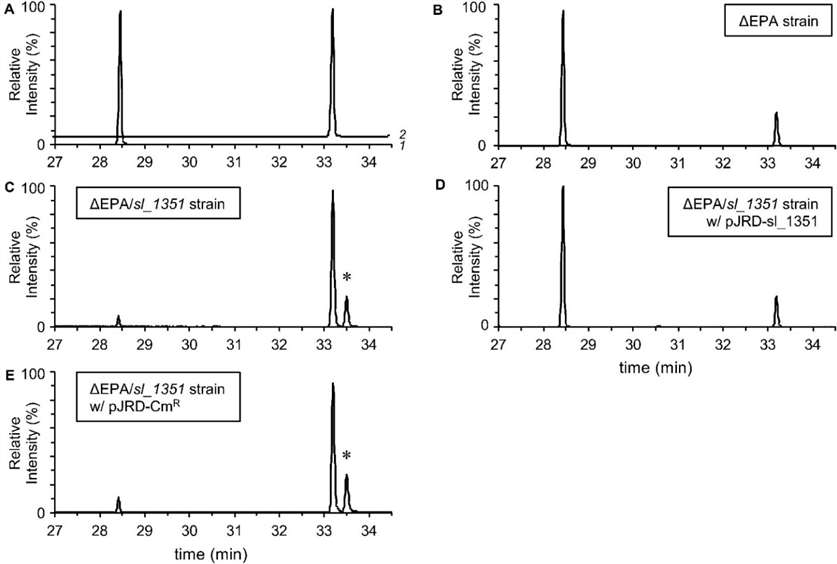Docosahexaenoic Acid (DHA) Analysis
Submit Your InquiryWhat is Docosahexaenoic Acid (DHA)?
Docosahexaenoic acid (DHA) is a 22-carbon, polyunsaturated fatty acid belonging to the omega-3 fatty acid family. It is classified as an essential fatty acid because it cannot be synthesized by the human body and must be obtained through dietary sources or supplements. DHA is a vital component of cell membranes, particularly in the brain, retina, and sperm, where it is abundantly present.
DHA is known for its structural and functional role in the brain. It constitutes a significant proportion of the total fatty acids found in the gray matter, and its adequate levels are crucial for optimal brain development and cognitive function. Additionally, DHA plays a critical role in maintaining visual acuity, as it is a major component of the retina. Furthermore, DHA exhibits anti-inflammatory properties and is implicated in the prevention and management of cardiovascular diseases.
DHA Analysis Projects Covered by Creative Proteomics
At Creative Proteomics, we offer comprehensive DHA analysis services that encompass various projects and sample types. Our expertise in DHA analysis extends to the following areas:
- Lipidomics Research: Lipidomics involves the comprehensive analysis of lipids in biological systems. Our DHA analysis services contribute to lipidomics studies by quantifying DHA levels in biological samples, elucidating its role in lipid metabolism and its impact on health outcomes.
- Aquaculture Research: Creative Proteomics supports aquaculture research by analyzing DHA levels in fish and seafood samples. Our services aid in assessing the nutritional quality of farmed fish and evaluating the effectiveness of dietary interventions to enhance DHA content.
- Nutritional and Dietary Studies: Understanding the DHA content in various dietary sources is crucial for nutritional research. We offer DHA analysis services for a wide range of sample types, including fish, algae, shellfish, and other food products, enabling researchers to explore the impact of different diets on DHA intake.
- Food and Beverage Industry: We provide DHA analysis services for food products and beverages, helping manufacturers determine the DHA content and ensure compliance with labeling regulations. Whether it is assessing the DHA levels in fish oils, fortified foods, or functional beverages, our analytical techniques deliver accurate results.
Analytical Platforms for DHA Analysis
Creative Proteomics employs mass spectrometry-based platforms for DHA analysis, enabling precise and sensitive quantification of DHA in various matrices. The following are the primary instruments used in our DHA analysis:
Liquid Chromatography-Mass Spectrometry (LC-MS): Our LC-MS platforms combine liquid chromatography with high-resolution mass spectrometry, allowing for the separation, identification, and quantification of DHA in complex samples. We utilize state-of-the-art LC-MS systems, such as the Agilent 1290 Infinity II LC system coupled with the Thermo Scientific Orbitrap Exploris 480 mass spectrometer, to achieve exceptional sensitivity and accuracy in DHA analysis.
Gas Chromatography-Mass Spectrometry (GC-MS): GC-MS is another powerful technique employed by Creative Proteomics for DHA analysis. This method involves the conversion of DHA into volatile derivatives, followed by separation and detection using gas chromatography coupled with mass spectrometry. Our GC-MS platforms, such as the Agilent 7890A GC system equipped with the Agilent 5977B mass spectrometer, offer excellent precision and sensitivity for DHA analysis.
 GC/MS analyses of fatty acid compositions (Ogawa et al., 2020).
GC/MS analyses of fatty acid compositions (Ogawa et al., 2020).
Sample Requirements for EPA Analysis
| Sample Type | Minimum Sample Volume/Weight | Recommended Sample Volume/Weight |
|---|---|---|
| Biological Samples | Blood: 1 milliliter | 1-5 milliliters |
| Tissue: 100 milligrams | 100-500 milligrams | |
| Fish and Seafood Samples | 100 grams | 200-500 grams |
| Algae Samples | 10 grams (dried) | 20-50 grams (dried) |
| Shellfish Samples | 100 grams | 200-500 grams |
Please note that these are general guidelines and can vary depending on the specific project requirements, analytical method, and sample complexity.
Reference
- Ogawa, Takuya, et al. "Bioconversion from docosahexaenoic acid to eicosapentaenoic acid in the marine bacterium Shewanella livingstonensis Ac10." Frontiers in Microbiology 11 (2020): 1104.



